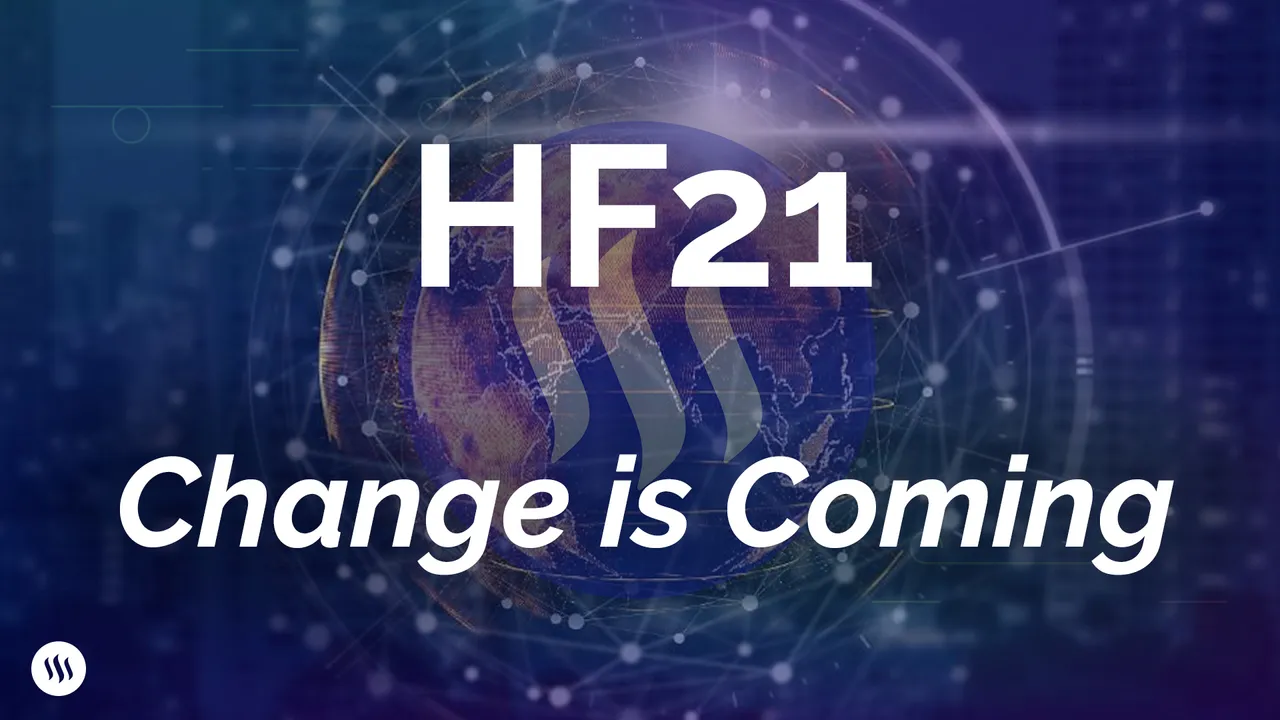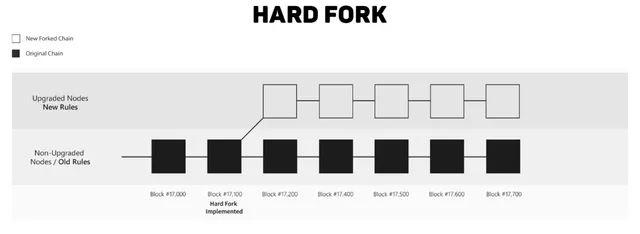
Hello Steemians, exciting times are upon us. On Tuesday, August 27th at 11:00 AM EDT, Steem will go through its 21st hardfork! We previously summarized the changes, but in today’s post we would like to help you understand what you can expect on 11:00 AM Tuesday morning when the hardfork occurs.
What is a Hardfork?
For those who are confused about all of this hardfork business, all you really need to know is that hardforks are a blockchain-specific term for software upgrades. As you probably know, blockchains are impossible to change by design. That’s why we call them "immutable." The chain grows as information is added to it in new blocks while the old information‒the information earlier in the chain of blocks‒stays the same.
This code has to be carefully designed because it protects all the tokens stored on the blockchain, all the social information Steemians choose to store on it, and it also governs the interactions between these two systems. This code has to be “bulletproof” so that as long as people are running Steem nodes, and as long as people are transacting on the blockchain, the chain will continue to grow in accordance with the rules embedded into the blockchain.
Updating the Rules
You can think of a hardfork as an update of the rules going forward. We can’t go back and change the rules that governed the creation of the chain in the past, but we can change the rules in a way that governs the future growth of the chain. This rule change is a little like taking a fork in the road. Some people running the blockchain may choose to continue using the old rules, isolating themselves in the process.
Because this change requires a firm commitment going forward, whether one chooses the new or old rules, it is hard. And that’s how we get the term "hardfork." It is similar to other software upgrades except that all of the nodes in the network have to coordinate their actions so that it happens at the exact same time. We have chosen August 27th at 11 AM for the next coordinated upgrade. One important factor in this choice was ensuring that exchanges were given enough time to prepare.

Maintaining Stability
In many protocols, hardforks are a chaotic event that threatens the stability of the ecosystem. This is because protocols like Ethereum and Bitcoin allow any motivated person to become a node and, as long as any nodes prefer the old software (i.e. the status quo) to the new, the result is a splitting of the chain into two competing protocols. Examples of these can be found with Bitcoin Cash, Bitcoin Gold, and Ethereum Classic.
DPoS
With Delegated Proof of Stake (DPoS), while anyone can produce blocks, only the top 20 block producers as determined by stake-weighted upvote, are "canonical." In order for new software to be integrated into the blockchain a supermajority of Witnesses have to come to a "consensus." The Steem blockchain guarantees that if a supermajority of Witnesses begin running the new software, any blocks from Witness nodes that have not upgraded will be invalidated. This is a classic hardfork.
However, because a super-majority is required, and because the Witnesses are ultimately accountable to Steem’s stakeholders, the odds are maximized toward only positive changes being made, along with very little interest in creating sister-forks; chains that continue being run based on the old rules.
What to Expect
Hopefully all of this happens seamlessly and you don't notice much of anything at all. We, along with many community members and witnesses, have been testing the new version of Steem on our testnet for several months now and have performed the hardfork logic on several smaller testnets.
But as much as we plan and test, it is possible to run into a few hiccups shortly after the hardfork because that will be the first time that new code will be run at scale. Our engineers will be monitoring the state of the network carefully during and after the hardfork so we can react quickly to any problems, should they arise.
User Experience Changes
There are a few changes that will impact how you use steemit.com and other Steem interfaces.
Rewards
The rewards curve is changing. We expect posts that would make more than 20 STEEM under the old rules to earn more after the changes. Those posts that would have made less than 20 STEEM under the old rules will receive less after the changes.
Reward Split
Reward funding is being changed from the 75/25 split that currently exists, to a 50/50 split between author and curator. That means you will be rewarded significantly more for curating content after the fork.
Downvotes
A downvote mana pool is being added, which will allow you to make a few downvotes each day without impacting your ability to earn curation rewards from upvotes.
If you would like to learn more about the changes included in HF21, please read this post.
The Steemit Team